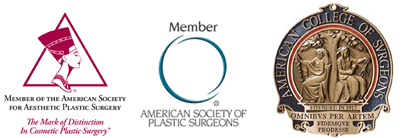The following educational writing will discuss tummy tuck surgery and blood clots (DVT), and it will help a person understand what this is and how we can minimize it. DVT is the abbreviation for Deep Venous Thrombosis. This is the medical term for blood clots. It is a risk after all operations including cosmetic surgery and plastic surgery. In particular, this writing will discuss blood clot after tummy tuck, because this operation is more prone than some operations. However, understanding DVT is important for any cosmetic operation. Overall, tummy tuck and cosmetic operations are extremely safe!
Abdominoplasty is the medical word for cosmetic tummy tuck or cosmetic mini tummy tuck. These are wonderful operations that can give a person a flat, tight, and attractive abdominal area. The operation is often part of a mommy makeover and can truly get a women back into a bikini. This is done by fixing the damages of having babies! It involves improving both the breasts and stomach at the same time. Results can be amazing! Please go to the before and after pictures in the photo gallery – category- “breast enhancement and tummy tuck.”
Like all operations, blood clots can happen and this is considered part of general abdominoplasty risks or tummy tuck risks. However, it is a very safe operation overall. The risk we are discussing is DVT or deep vein thrombosis. First, we will discuss what this problem is and then focus on it’s prevention- or ways to maximize “not” having this problem.
After all operations, blood clots or DVT can occur. This tends to occur in the legs right after the induction of anesthesia or beginning of surgery. The clots are in the deep veins and not the superficial veins that we see on the surface of the legs. If these blood clots occur, there is a risk that they can break off in the veins and travel with the blood to the lungs. This is called a pulmonary embolus or PE. It can be a serious health issue and hence prevention is important.
Risk factors for DVT include but are not limited to:
Cancer
Birth control pills or hormones
Operations
High blood viscosity (thick blood)
Obesity
Obstructed venous return (vein problems)
Lack of movement – (immobility after surgery)
Previous DVT
Older age
People having cosmetic operations like a tummy tuck can have some of these risk factors for DVT. However, if you have none of them, it does not mean you will not have a DVT. Notice how stopping birth control pills wil be important and early ambulation will also decrease our chances of this problem.
Many things can be done to decrease our chances of this problem. Active leg exercises, leg elevation, and the use of elastic support stockings can increase vein blood flow and decrease clotting. Early ambulation after surgery and avoidance of prolonged bed rest can promote blood flow and prevent clots. Think of the blood flow in our veins like a slow moving stream. Anything that improves flow or helps the blood flow helps prevent DVT. Even elevating the foot of the bed 15-20 degrees can help promote blood drainage. Patient positioning after surgery will be discussed to help this also.
I recommend the acronym “PAIL” to help remember things to do after surgery to decrease DVT or tummy tuck blood clots or abdominoplasty blood clots.
P-A-I-L
P-Patient Positioning.
Keep the “toes above the nose” to help blood flow. A lounge chair is not tilted back enough. Use pillows to get those legs above the heart.
A- Ambulation (early ambulation)
Get out of bed frequently. A minimum of 4-6 times a day for 5-10 minutes a day. More is good. This encourages blood flow. It is recommended to avoid twisting of the abdomen, if you are recovering from a tummy tuck. By avoiding twisting, it encourages the skin to heal to the underlying muscles and decreases fluid accumulation. Early ambulation, without twisting the abdomen, is recommended after surgery.
I- Invisible Bicycle
Despite early ambulation, we still will have a lot of time in bed. We can promote blood flow by moving the legs, like riding an “invisible bicycle.” This can be done in bed with minimal pain after surgery, even an abdominoplasty. You can’t do this enough! Do it as much as you can.
L- Leg Compression.
I use sequential leg compression machines for all of my operations to squeeze your legs during surgery and promote blood flow. Leg stocking are recommended, as well, to help with this. Knee high stockings to compress the veins are recommended.
Remember “PAIL” to help think of the important things after surgery to minimize DVT and problems.
Dr. Saunders is a board-certified plastic surgeon who practices exclusively cosmetic surgery. Please check out the tummy tuck before and after photos on our web site. Also, please come in for a complimentary consultation to learn about your choices and options!

